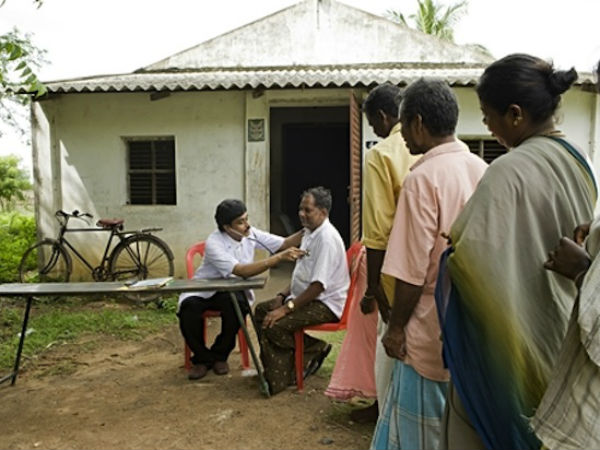Six Indian states have more doctors than WHO guideline
 While the ratio of doctors to the patients in India is comparatively low as per the prescribed WHO norms, six states are standing out by having more doctors. According to the WHO norms, there must be one doctor for 1000 people. But the six states; Delhi, Karnataka, Kerala, Tamil Nadu, Punjab and Goa have more doctors than the WHO guidelines.
While the ratio of doctors to the patients in India is comparatively low as per the prescribed WHO norms, six states are standing out by having more doctors. According to the WHO norms, there must be one doctor for 1000 people. But the six states; Delhi, Karnataka, Kerala, Tamil Nadu, Punjab and Goa have more doctors than the WHO guidelines.
The density of the doctors in these six states can be comparable to that of several foreign countries. The density of doctors in Tamil Nadu per 1000 people ranges to 4 which is of the same level as Norway (4.3) and Sweden (4.2). In Delhi, the density is three, which is higher than the UK, US, Canada and Japan, and in Kerala and Karnataka, it is 1.5. In Punjab and Goa, the density is about 1.3.

Though these states excel in terms of the ratio of doctors and patients, some still face a shortage in the rural health sector, since the Indian doctors are largely concentrated in the urban areas. But, Tamil Nadu and Kerala say that they don’t have any vacancies in their rural public health sector. According to Dr Prabhakar DN, formal president of Karnataka branch of Indian Medical Association, 40% of total doctors in Karnataka are in Bangalore. “In rural areas, there is still a shortage. Bangalore is totally saturated, even for specialists. They don’t get jobs. Doctor salaries are coming down. Suppose one hospital is doing well in an area. If three more come up in the same area, they will resort to unethical practices to get more patients. We need to focus on producing doctors for the periphery. Just producing more doctors won’t work,” Dr Prabhakar added.
Also, according to Dr N Sulphi, secretary of Kerala IMA, unlike engineers, who typically need to find jobs, doctors can be self-employed. If there are too many doctors in a geographical area, they resort to unethical practices on the few patients they get to make the ends meet. That’s why there is a need to calibrate the number of doctors being produced, he says. “We have told the state government to stop allowing the opening of more private colleges. They should shut down many of those in a bad shape, with no patients and no money to pay the faculty. The IMA needs to intervene each time to help them as they are not paid for six to eight months”, he adds.
Regarding the better number of doctors in some states, Dr Sulphi opines that most of the states with high doctor population ratios own the largest number of medical seats, again resulting in producing a new batch of doctors. But, he says, they need a job. “They are willing to take up casualty duty, which is not even a permanent one. It could be a six-month job paying just Rs 40,000,” explains Dr Sulphi.
Most of the doctors from these states are unwilling to move to the states with an acute shortage of doctors. Tamil Nadu IMA president Dr Jayalal agreed that there was an overfill of doctors in cities with even consultants getting low pay. He also says that every passing year, the numbers of applicants for clinical and non-clinical areas are increasing, which is a matter of concern.
In such a situation, the arising question is that whether merely producing more doctors can address the shortage in public health and in rural areas!
Source (Graphical data &information): https://timesofindia.indiatimes.com/india/6-states-have-more-doctors-than-whos-11000-guideline/articleshow/65640694.cms.